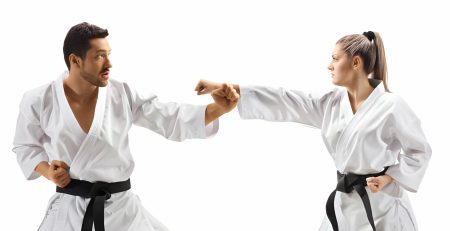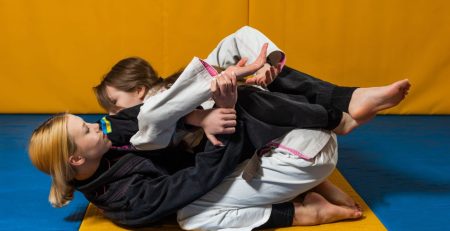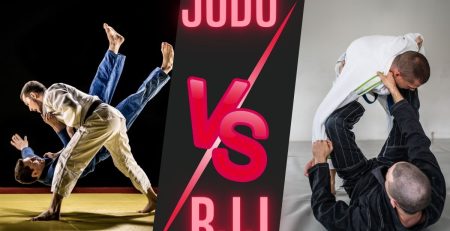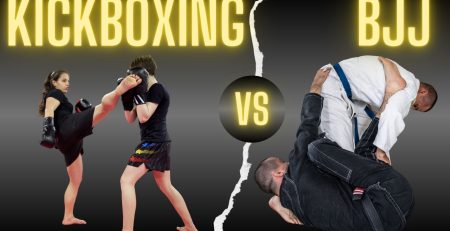Boxing vs Brazilian Jiu-Jitsu – Exploring the Dynamics of Two Martial Arts Giants
Table of Contents
- Introduction
- History and Origins
- Core Techniques and Principles
- Training Methods
- Fitness and Health Benefits
- Self-Defense and Real-World Application
- Competitions and Tournaments
- Equipment and Gear
- Community and Culture
- Conclusion
Introduction
In the world of martial arts, few disciplines rival the popularity and effectiveness of Boxing and Brazilian Jiu-Jitsu (BJJ). Each has its own rich history, unique techniques, and dedicated following. While Boxing emphasizes striking and footwork, BJJ focuses on grappling and ground fighting. In this comprehensive guide, we will explore the similarities and differences between these two martial arts, helping you decide which one might be the best fit for your interests, goals, and lifestyle.
History and Origins
Boxing, often referred to as “the sweet science,” traces its roots back to ancient civilizations such as the Sumerians and Greeks. Throughout history, it evolved into the modern sport we know today, with rules and regulations governing everything from technique to attire. On the other hand, Brazilian Jiu-Jitsu has a more recent origin, emerging in Brazil in the early 20th century. Developed by the Gracie family, BJJ adapted traditional Japanese Jiu-Jitsu techniques to focus on ground fighting and submissions.
Boxing has a rich tapestry of historical significance, with depictions found in ancient artifacts and literature dating back centuries. From the gladiatorial arenas of Rome to the bare-knuckle brawls of 18th-century England, Boxing has endured as a testament to humanity’s fascination with combat. Conversely, Brazilian Jiu-Jitsu’s story is more localized, originating in Brazil through the efforts of the Gracie family. Their adaptation of Japanese Jiu-Jitsu techniques revolutionized the martial arts world, emphasizing leverage and technique over brute strength. If you’re interested in diving deeper into the world of Brazilian Jiu Jitsu, this comprehensive guide provides valuable insights into its history, techniques, and benefits.
Core Techniques and Principles
Boxing is characterized by its emphasis on punching, defensive maneuvers, and footwork. Fighters use a variety of punches, including jabs, crosses, hooks, and uppercuts, to outmaneuver and outscore their opponents. In contrast, Brazilian Jiu-Jitsu revolves around grappling and submission techniques. Practitioners learn how to control opponents on the ground, using leverage and technique to secure advantageous positions and apply joint locks or chokeholds.
In Boxing, fighters hone their skills through rigorous training regimens focused on developing speed, power, and precision. Footwork drills, shadowboxing, and heavy bag work are staples of a boxer’s training routine, enhancing their ability to move fluidly and strike with accuracy. On the other hand, Brazilian Jiu-Jitsu practitioners dedicate countless hours to mastering the intricacies of ground fighting. They learn how to transition between positions, apply submissions, and defend against opponents of varying sizes and skill levels.
Training Methods
Training in Boxing typically involves a combination of cardiovascular exercises, bag work, mitt work, and sparring sessions. Boxers focus on developing speed, power, endurance, and timing through repetitive drills and conditioning exercises. Brazilian Jiu-Jitsu training, on the other hand, centers around live grappling sessions, drilling techniques, and positional sparring. BJJ practitioners learn how to flow from one position to another, adapt to their opponent’s movements, and capitalize on openings for submissions.
In Boxing, the training environment is characterized by intensity and discipline. Boxers push themselves to the limit during workouts, striving to improve their speed, power, and stamina with each session. Coaches emphasize the importance of technique and strategy, teaching fighters how to read their opponents and react accordingly. Similarly, Brazilian Jiu-Jitsu training is demanding both physically and mentally. Practitioners learn to control their breathing, conserve energy, and maintain composure under pressure while executing techniques with precision and efficiency. Additionally, for insights into Brazilian jiu jitsu training, explore this informative article.
Fitness and Health Benefits
Both Boxing and Brazilian Jiu-Jitsu offer significant fitness and health benefits. Boxing workouts are known for their high intensity and calorie-burning potential, helping individuals improve cardiovascular health, stamina, and muscular endurance. Similarly, BJJ training provides a full-body workout, engaging muscles throughout the body while improving flexibility, balance, and coordination. Additionally, martial arts training can boost self-confidence, reduce stress, and enhance mental resilience.
In Boxing, the cardiovascular demands of the sport lead to improvements in aerobic capacity, heart health, and overall endurance. High-intensity interval training (HIIT) sessions and sparring bouts increase calorie expenditure and promote weight loss, making Boxing an effective tool for individuals looking to improve their fitness and shed excess pounds. Brazilian Jiu-Jitsu training offers similar benefits, with the added advantage of strength development and muscle toning. Grappling drills and positional sparring challenge the body’s anaerobic systems, improving muscular endurance and enhancing functional strength.
Self-Defense and Real-World Application
One of the primary reasons people study martial arts is for self-defense purposes, and both Boxing and Brazilian Jiu-Jitsu offer practical techniques for real-world situations. Boxing teaches individuals how to strike effectively and defend themselves while standing, while BJJ equips practitioners with skills to control and subdue opponents on the ground. Combining the two disciplines can provide a well-rounded approach to self-defense, covering both striking and grappling scenarios.
In self-defense situations, the ability to remain calm under pressure and respond effectively can make all the difference. Boxing teaches individuals how to maintain distance, read their opponents, and defend against strikes, providing valuable tools for diffusing volatile situations. Similarly, Brazilian Jiu-Jitsu training emphasizes situational awareness, leverage, and control, enabling practitioners to neutralize threats and protect themselves or others from harm. By integrating Boxing and BJJ techniques, individuals can enhance their self-defense capabilities and feel more confident in their ability to handle confrontational encounters. To get more information about the best martial arts for self defense, you can check out this article on their website.
Competitions and Tournaments
Both Boxing and Brazilian Jiu-Jitsu have vibrant competitive scenes, with opportunities for practitioners to test their skills in various formats. Boxing competitions range from amateur bouts to professional matches, with fighters competing for titles and accolades at local, national, and international levels. Similarly, BJJ tournaments offer divisions for practitioners of all ages, skill levels, and weight classes, allowing individuals to showcase their grappling prowess in gi and no-gi formats.
In Boxing, competitions are governed by strict rules and regulations designed to ensure the safety and fairness of participants. Fighters compete in weight classes, with matches typically consisting of multiple rounds of three minutes each. Victory can be achieved by knockout, technical knockout, or judges’ decision, with points awarded for effective striking and defense. Brazilian Jiu-Jitsu tournaments follow a similar format, with competitors earning points for takedowns, sweeps, passes, and submissions. Matches are often decided by submission or judges’ decision, with referees enforcing rules to prevent injury and maintain sportsmanship.
Equipment and Gear
The equipment and gear used in Boxing and Brazilian Jiu-Jitsu differ based on the nature of each martial art. Boxers typically wear hand wraps, boxing gloves, mouthguards, and protective headgear during training and competition. In contrast, BJJ practitioners wear a gi (a traditional uniform consisting of a jacket and pants) or no-gi attire (rashguards and grappling shorts) depending on the training environment and personal preference.
In Boxing, equipment plays a crucial role in protecting fighters from injury and enhancing performance. Hand wraps provide wrist support and cushioning for the knuckles, reducing the risk of sprains and fractures during impact. Boxing gloves are designed to absorb shock and distribute force evenly, minimizing the risk of concussions and brain injury. Mouthguards protect the teeth and jaws from impact, while headgear provides additional protection for the head and face. In Brazilian Jiu-Jitsu, the gi serves as both a training tool and a symbol of tradition and lineage. Made from durable cotton or polyester fabric, the gi provides grip for grappling techniques and allows practitioners to execute chokes, joint locks, and sweeps with precision. No-gi attire offers a more streamlined alternative for practitioners who prefer a less restrictive training experience. Bravo BJJ is a brand offering Brazilian jiu jitsu gear on discount price.
Community and Culture
Both Boxing and Brazilian Jiu-Jitsu boast strong communities and cultures, with practitioners forming bonds and friendships through shared training experiences. Gyms and academies serve as hubs for learning and camaraderie, where individuals from diverse backgrounds come together to pursue their martial arts goals. Additionally, each martial art has its own set of traditions, etiquette, and values that shape the overall culture of the community.
In Boxing, the gym is often considered a second home for fighters, providing a supportive environment for training and personal growth. Coaches and teammates offer encouragement and guidance, helping individuals overcome challenges and achieve their goals. Respect, discipline, and sportsmanship are core values in the Boxing community, with fighters demonstrating humility and integrity both inside and outside the ring. Similarly, Brazilian Jiu-Jitsu academies foster a sense of belonging and mutual respect among practitioners. Students of all ages and skill levels train together, learning from one another and building camaraderie through shared experiences. The martial art’s emphasis on humility, perseverance, and self-improvement creates a positive and inclusive training environment where everyone can thrive.
Conclusion
In conclusion, Boxing and Brazilian Jiu-Jitsu are two distinct martial arts with unique techniques, philosophies, and benefits. Whether you’re interested in striking or grappling, self-defense or competition, there’s something for everyone in these dynamic disciplines. By exploring the history, training methods, fitness benefits, and real-world applications of Boxing and BJJ, you can make an informed decision about which martial art aligns best with your interests and goals. So whether you’re lacing up your gloves or tying your belt, embrace the journey and enjoy the transformative power of martial arts.
FAQs (Frequently Asked Questions)
Q1. What are the main differences between Boxing and Brazilian Jiu-Jitsu?
A: Boxing emphasizes striking with punches while standing, focusing on footwork, defensive maneuvers, and offensive combinations. Brazilian Jiu-Jitsu, on the other hand, centers around grappling and ground fighting techniques, including submissions, sweeps, and positional control.
Q2. Which martial art is better for self-defense, Boxing, or Brazilian Jiu-Jitsu?
A: Both Boxing and Brazilian Jiu-Jitsu offer valuable skills for self-defense, but their effectiveness may vary depending on the situation. Boxing teaches individuals how to strike effectively and defend themselves while standing, while Brazilian Jiu-Jitsu equips practitioners with techniques to control and subdue opponents on the ground. Combining the two disciplines can provide a well-rounded approach to self-defense.
Q3. How long does it take to become proficient in Boxing or Brazilian Jiu-Jitsu?
A: The time it takes to become proficient in Boxing or Brazilian Jiu-Jitsu varies depending on individual factors such as natural ability, dedication to training, and frequency of practice. Generally, it may take several months to a few years to develop fundamental skills and techniques in either martial art.
Q4. Which martial art offers a better workout, Boxing, or Brazilian Jiu-Jitsu?
A: Both Boxing and Brazilian Jiu-Jitsu provide excellent workouts that improve cardiovascular health, muscular strength, and overall fitness. Boxing workouts are known for their high intensity and calorie-burning potential, while Brazilian Jiu-Jitsu training offers a full-body workout that engages muscles throughout the body.
Q5. Are there competitions for Boxing and Brazilian Jiu-Jitsu?
A: Yes, both Boxing and Brazilian Jiu-Jitsu have vibrant competitive scenes with opportunities for practitioners to test their skills in various formats. Boxing competitions range from amateur bouts to professional matches, while BJJ tournaments offer divisions for practitioners of all ages, skill levels, and weight classes.
Q6. What equipment and gear are needed for Boxing and Brazilian Jiu-Jitsu?
A: In Boxing, equipment typically includes hand wraps, boxing gloves, mouthguards, and protective headgear. Brazilian Jiu-Jitsu practitioners wear a gi (traditional uniform) or no-gi attire (rashguards and grappling shorts) depending on personal preference and the training environment.
Q7. How do I find a Boxing gym or Brazilian Jiu-Jitsu academy near me?
A: To find a Boxing gym or Brazilian Jiu-Jitsu academy near you, you can start by searching online directories, asking for recommendations from friends or family, or visiting local martial arts schools to inquire about classes and training programs. Many gyms offer trial classes or introductory sessions for new students.
Q8. Can anyone learn Boxing or Brazilian Jiu-Jitsu, regardless of age or fitness level?
A: Yes, both Boxing and Brazilian Jiu-Jitsu are accessible to people of all ages and fitness levels. Whether you’re a complete beginner or an experienced athlete, there are classes and training programs available to accommodate your needs and goals. It’s never too late to start your martial arts journey and experience the benefits of training in Boxing or Brazilian Jiu-Jitsu.














Leave a Reply
You must be logged in to post a comment.